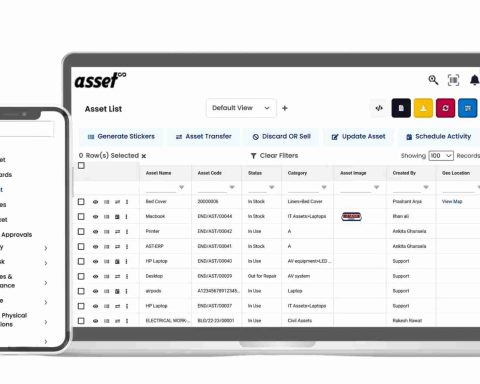A well-designed Business Continuity Plan (BCP) serves as a company’s blueprint, ensuring it can swiftly respond to and recover from unexpected disruptions. Whether natural disasters, cyber-attacks, or other operational threats, a BCP outlines critical steps for maintaining business functions.
The essence of an effective plan lies in its simplicity and clarity, ensuring swift and coordinated responses when emergencies arise. By prioritizing straightforward strategies and clear communication, businesses can enhance their resilience, safeguarding their assets, employees, and reputation, ultimately securing long-term success in a dynamic world.
A Closer Look at Business Continuity Planning
Business Continuity Planning (BCP) involves developing procedures and instructions an organization must follow in the face of disaster, focusing on securing its essential functions. The key objectives of a BCP include minimizing financial loss, ensuring the continuity of business operations, and maintaining a positive image and customer trust during crises.
Companies might explore various strategies to ensure operational continuity as part of their contingency planning. It includes establishing financial safety nets by looking for lenders that offer $2,000 loans or whatever amount you need. It could also be done by implementing cloud-based data backups for IT infrastructure and forming strategic partnerships for supply chain resilience, among other efforts.
While often used interchangeably with disaster recovery, BCP is broader. Disaster recovery specifically targets restoring IT infrastructure and operations after a crisis. In contrast, BCP encompasses a broader scope, including preserving all critical business aspects—from logistics to employee safety—ensuring a comprehensive approach to organizational resilience.
Assessing Your Business Needs
Assessing your business needs is fundamental in crafting an effective BCP. This process begins with identifying critical business functions—those operations essential for survival and continued profitability.
Understanding your business’s vulnerabilities then becomes crucial. It involves pinpointing areas most susceptible to disruption, whether natural disasters, cybersecurity threats, or supply chain failures. The role of risk assessment in BCP is to evaluate these potential risks to prioritize planning efforts systematically.
It helps allocate resources more efficiently, ensuring that the most critical aspects of your business are fortified first. Through thorough risk assessment, businesses can create a robust BCP that addresses specific vulnerabilities, enhancing overall resilience.
Building Your Business Continuity Team
Selecting the right team members involves choosing individuals with the necessary skills, knowledge, and temperament to handle crises effectively. Once assembled, defining roles and responsibilities is crucial to avoid confusion and ensure cohesive action during a crisis.
Leadership plays a critical role in crisis management. Leaders must make decisive decisions, communicate effectively, and maintain morale. A well-structured team with solid leadership can significantly enhance an organization’s ability to navigate disruptions and minimize their impact on operations.
Critical Components in Developing Your Plan
A well-structured BCP consists of several key components addressing different aspects of continuity and crisis management.
- Emergency Contact Information – Up-to-date emergency contact information for all team members, stakeholders, and emergency services is the foundation of an effective BCP. It ensures swift coordination and communication during the initial stages of a crisis.
- Detailed Recovery Strategies for Critical Functions – It’s crucial to Identify and outline recovery strategies for your business’s critical functions. It involves creating specific, step-by-step procedures to restore essential operations with minimal downtime, ensuring the continuity of operations vital for survival and profitability.
- Communication Plan During a Disruption – This plan should detail the communication methods and channels with employees, customers, and partners. Effective communication maintains transparency, mitigates confusion, and preserves trust, preventing misinformation and panic.
- IT and Data Backup Strategy – A robust IT and data backup strategy, including regular backups and leveraging cloud services, ensures your organization can quickly recover from cyber-attacks, data loss, or physical damage to IT assets.
- Employee Safety and Evacuation Procedures – Ensuring the safety of your employees is essential. Your BCP should include detailed evacuation routes, assembly points, and specific roles during an evacuation. Regular training sessions and drills are essential to familiarize staff with these procedures and ensure everyone knows how to act swiftly and safely in an emergency.
Training Your Team
Ensuring every member of your organization knows the plan and understands their role within it is critical for effective crisis management. Employees can practice and refine the skills necessary for executing the BCP under pressure through regular, engaging training sessions.
Cultivating a culture of preparedness transcends traditional training methods. It’s about weaving resilience and proactive thinking into your company’s daily operations. Encourage discussions around risk awareness and foster an environment where proactive strategies are rewarded.
This approach turns preparedness into a fundamental aspect of your corporate identity, empowering your team to act decisively and confidently during unexpected events, thus ensuring the robustness and agility of your business in facing any challenge.
Takeaway
In a business environment where uncertainties loom large, thorough preparedness for any eventuality is crucial. Invest time and resources into developing a comprehensive BCP, training your team, and fostering a culture of readiness. This way, you position your organization to navigate disruptions with resilience. Remember, the strength of your preparation today dictates your success in facing tomorrow’s challenges.






